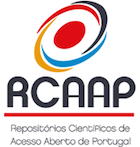Pediatric type I tympanoplasty: A study of factors affecting outcome
DOI:
https://doi.org/10.34631/sporl.834Keywords:
Type I tympanoplasty, tympanic perforation, childrenAbstract
Aim: Assess the results of type I tympanoplasty in pediatric patients and identify possible prognostic factors that may influence the success of this intervention.
Study Design: Retrospective.
Material and Methods: Review of pediatric patients submitted to type I tympanoplasty, according to Portmann’s classification, in Centro Hospitalar Vila Nova Gaia/Espinho, between 2001 and 2019.
Results: A total of 146 surgeries were performed in this period. The anatomical success rate was 77.5% and audiometric success rate was 82.8%, with an improvement in the air-bone gap in the postoperative period (24.4 vs 13.4dB; p<0.001). Perforations associated with recurrent acute otitis media and surgeries performed during summer months presented greater anatomical success (p=0.005 e p=0.024; respectively); as opposed to closure of subtotal perforations that showed inferior audiometric success (p=0.021).
Conclusions: Type I tympanoplasty is an effective procedure for closing tympanic perforations and improving hearing loss in pediatric patients.
Downloads
References
Collins WO, Telischi FF, Balkany TJ, Buchman CA. Pediatric tympanoplasty: effect of contralateral ear status on outcomes. Arch Otolaryngol Head Neck Surg. 2003;129(6):646-51. DOI:10.1001/archotol.129.6.646
Knapik M, Saliba I. Pediatric myringoplasty: a study of factors affecting outcome. Int J Pediatr Otorhinolaryngol. 2011;75(6):818-23. DOI:10.1016/j.ijporl.2011.03.015
Jensen RG, Koch A, Homoe P. Long-term tympanic membrane pathology dynamics and spontaneous healing in chronic suppurative otitis media. Pediatr Infect Dis J. 2012;31(2):139-44. DOI:10.1097/INF.0b013e318238c0a4
Pignataro L, Grillo Della Berta L, Capaccio P, Zaghis A. Myringoplasty in children: anatomical and functional results. J Laryngol Otol. 2001;115(5):369-73. DOI:10.1258/0022215011907893
Portmann M, Portmann D. Techniques of tympanomastoidectomy. Otolaryngol Clin North Am. 1989;22(1):29-40.
Baklaci D, Guler I, Kuzucu I, Kum RO, et al. Type 1 tympanoplasty in pediatric patients: a review of 102 cases. BMC Pediatr. 2018;18(1):345. DOI:10.1186/s12887-018-1326-1
Bluestone CD, Cantekin EI, Douglas GS. Eustachian tube function related to the results of tympanoplasty in children. Laryngoscope. 1979;89(3):450-8. DOI:10.1288/00005537-197903000-00013
Denoyelle F, Roger G, Chauvin P, Garabedian EN. Myringoplasty in children: predictive factors of outcome. Laryngoscope. 1999;109(1):47-51. DOI:10.1097/00005537-199901000-00010
Vrabec JT, Deskin RW, Grady JJ. Meta-analysis of pediatric tympanoplasty. Arch Otolaryngol Head Neck Surg. 1999;125(5):530-4. DOI:10.1001/archotol.125.5.530
Hardman J, Muzaffar J, Nankivell P, Coulson C. Tympanoplasty for Chronic Tympanic Membrane Perforation in Children: Systematic Review and Meta-analysis. Otol Neurotol. 2015;36(5):796-804. DOI:10.1097/mao.0000000000000767
Vartiainen E, Nuutinen J. Success and pitfalls in myringoplasty: follow-up study of 404 cases. Am J Otol. 1993;14(3):301-5.
Ophir D, Porat M, Marshak G. Myringoplasty in the pediatric population. Arch Otolaryngol Head Neck Surg. 1987;113(12):1288-90. DOI:10.1001/archotol.1987.01860120034003
Yung M, Neumann C, Vowler SL. A longitudinal study on pediatric myringoplasty. Otol Neurotol. 2007;28(3):353-5. DOI:10.1097/mao.0b013e318030d384
Committee on Hearing and Equilibrium guidelines for the evaluation of results of treatment of conductive hearing loss. AmericanAcademy of Otolaryngology-Head and Neck Surgery Ffoundation, Inc. Otolaryngol Head Neck Surg. 1995;113(3):186-7. DOI:10.1016/s0194-5998(95)70103-6
Blanshard JD, Robson AK, Smith I, Maw AR. A long term view of myringoplasty in children. J Laryngol Otol. 1990;104(10):758-62. DOI:10.1017/s0022215100113854
Ribeiro JC, Rui C, Natercia S, Jose R, et al. Tympanoplasty in children: A review of 91 cases. Auris Nasus Larynx. 2011;38(1):21-5. DOI:10.1016/j.anl.2010.05.004
Castro O, Perez-Carro AM, Ibarra I, Hamdan M, et al. Myringoplasties in children: our results. Acta Otorrinolaringol Esp. 2013;64(2):87-91. DOI:10.1016/j.otorri.2012.06.012
[Surgical treatment of tympanic perforation in children]. Arch Pediatr. 2005;12(3):372-6. DOI:10.1016/j.arcped.2004.07.008
Raine CH, Singh SD. Tympanoplasty in children. A review of 114 cases. J Laryngol Otol. 1983;97(3):217-21. DOI:10.1017/s0022215100094032
Strong MS. The eustachian tube: basic considerations. Otolaryngol Clin North Am. 1972;5(1):19-27.
Umapathy N, Dekker PJ. Myringoplasty: is it worth performing in children? Arch Otolaryngol Head Neck Surg. 2003;129(10):1053-5. DOI:10.1001/archotol.129.10.1053
Zwierz A, Haber K, Sinkiewicz A, Kalinczak-Gorna P, et al. The significance of selected prognostic factors in pediatric tympanoplasty. Eur Arch Otorhinolaryngol. 2019;276(2):323-33. DOI:10.1007/s00405-018-5193-z
Caylan R, Titiz A, Falcioni M, De Donato G, et al. Myringoplasty in children: factors influencing surgical outcome. Otolaryngol Head Neck Surg. 1998;118(5):709-13. DOI:10.1177/019459989811800529
Vartiainen E, Vartiainen J. Tympanoplasty in young patients: the role of adenoidectomy. Otolaryngol Head Neck Surg. 1997;117(6):583-5. DOI:10.1016/s0194-5998(97)70036-6
Gianoli GJ, Worley NK, Guarisco JL. Pediatric tympanoplasty: the role of adenoidectomy. Otolaryngol Head Neck Surg. 1995;113(4):380-6. DOI:10.1016/s0194-5998(95)70072-2
Lee P, Kelly G, Mills RP. Myringoplasty: does the size of the perforation matter? Clin Otolaryngol Allied Sci. 2002;27(5):331-4. DOI:10.1046/j.1365-2273.2002.00590.x
Black JH, Hickey SA, Wormald PJ. An analysis of the results of myringoplasty in children. Int J Pediatr Otorhinolaryngol. 1995;31(1):95-100. DOI:10.1016/0165-5876(94)01067-8
Applebaum EL, Deutsch EC. An endoscopic method of tympanic membrane fluorescein angiography. Ann Otol Rhinol Laryngol. 1986;95(5 Pt 1):439-43. DOI:10.1177/000348948609500501
Albera R, Ferrero V, Lacilla M, Canale A. Tympanic reperforation in myringoplasty: evaluation of prognostic factors. Ann Otol Rhinol Laryngol. 2006;115(12):875-9. DOI:10.1177/000348940611501202
Kotecha B, Fowler S, Topham J. Myringoplasty: a prospective audit study. Clin Otolaryngol Allied Sci. 1999;24(2):126-9. DOI:10.1046/j.1365-2273.1999.00227.x
Gersdorff M, Garin P, Decat M, Juantegui M. Myringoplasty: long-term results in adults and children. Am J Otol. 1995;16(4):532-5.
Gupta SC. Myringoplasty with a single flap. Ear Nose Throat J. 2000;79(12):946-8, 50-1.
Emir H, Ceylan K, Kizilkaya Z, Gocmen H, et al. Success is a matter of experience: type 1 tympanoplasty : influencing factors on type 1 tympanoplasty. Eur Arch Otorhinolaryngol. 2007;264(6):595-9. DOI:10.1007/s00405-006-0240-6
Uyar Y, Keles B, Koc S, Ozturk K, et al. Tympanoplasty in pediatric patients. Int J Pediatr Otorhinolaryngol. 2006;70(10):1805-9. DOI:10.1016/j.ijporl.2006.06.007
Cohn AM, Schwaber MK, Anthony LS, Jerger JF. Eustachian tube function and tympanoplasty. Ann Otol Rhinol Laryngol. 1979;88(3 Pt 1):339-47. DOI:10.1177/000348947908800308
Chandrasekhar SS, House JW, Devgan U. Pediatric tympanoplasty. A 10-year experience. Arch Otolaryngol Head Neck Surg. 1995;121(8):873-8. DOI:10.1001/archotol.1995.01890080041008
Carr MM, Poje CP, Nagy ML, Pizzuto MP, et al. Success rates in paediatric tympanoplasty. J Otolaryngol. 2001;30(4):199-202. DOI:10.2310/7070.2001.19703
Halim A, Borgstein J. Pediatric myringoplasty: postaural versus transmeatal approach. Int J Pediatr Otorhinolaryngol. 2009;73(11):1580-3. DOI:10.1016/j.ijporl.2009.08.010
Karkanevatos A, De S, Srinivasan VR, Roland NJ, et al. Day-case myringoplasty: five years' experience. J Laryngol Otol. 2003;117(10):763-5. DOI:10.1258/002221503770716160
Downloads
Published
How to Cite
Issue
Section
License
Copyright (c) 2020 The authors retain copyright of this article.

This work is licensed under a Creative Commons Attribution-ShareAlike 4.0 International License.






